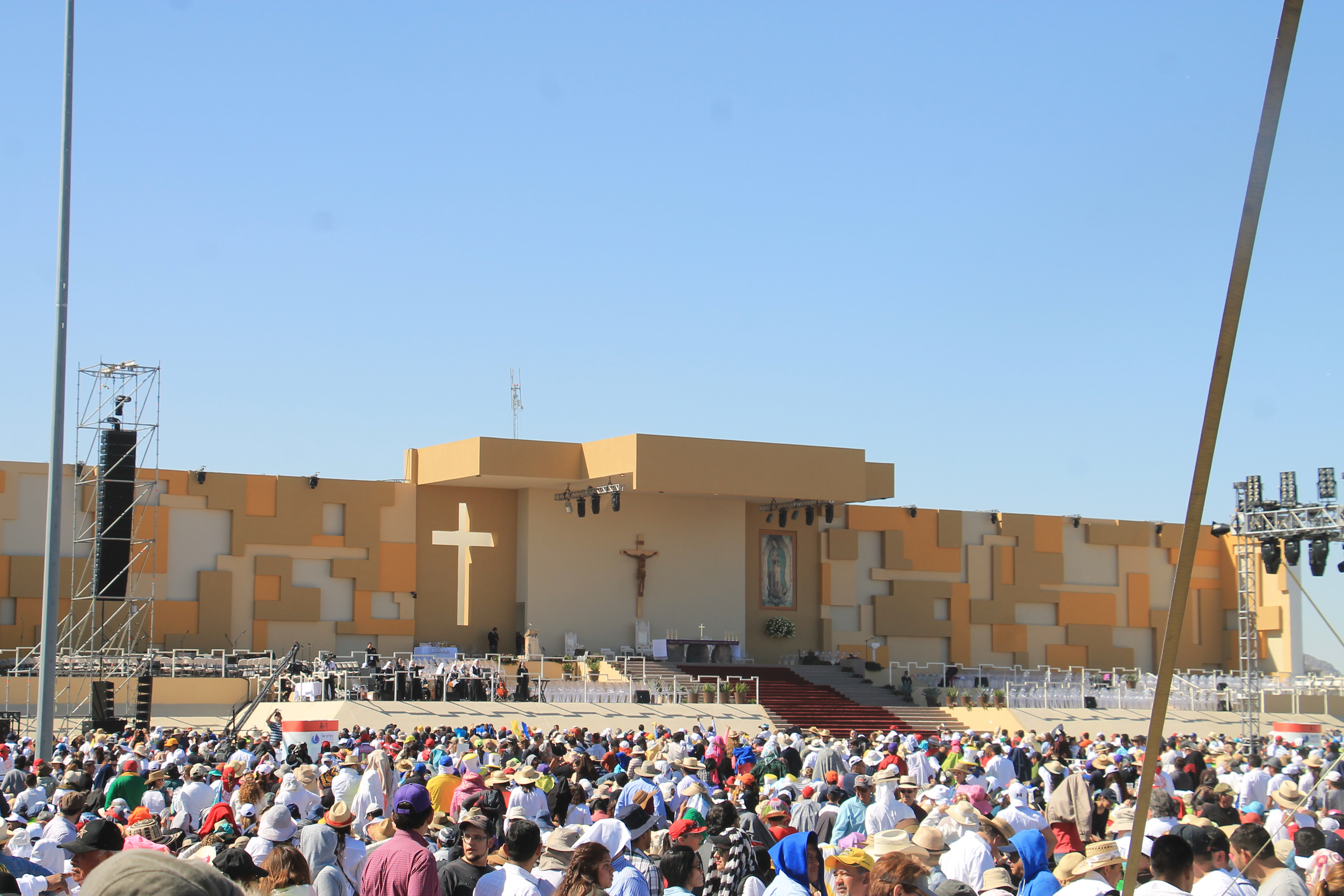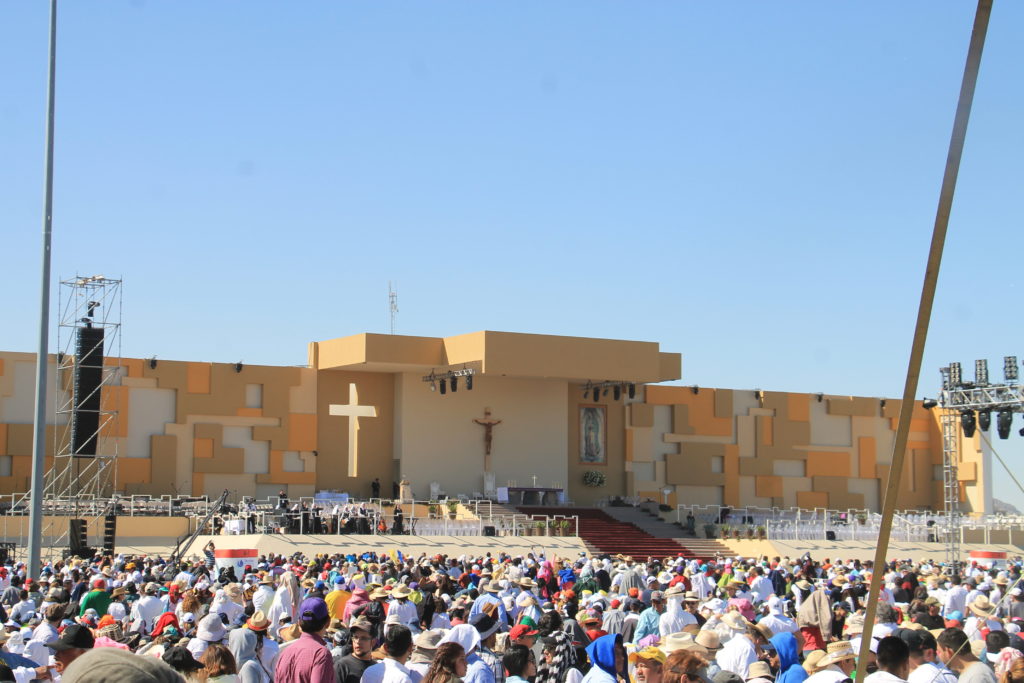
CIUDAD JUÁREZ ― Even though Spanish is not Sr. Caritas Wendt’s primary language, she was able to experience a sense of the Universal Church when she made a pilgrimage to Ciudad Juárez for the last stop on Pope Francis’ Feb. 12-17 apostolic visit to Mexico.
“Even though I’m not Hispanic, I experienced a solidarity with my Hispanic brothers and sisters and that his visit was important to me as it was to them,” said Sr. Caritas, SOLT, who serves at Most Holy Trinity Parish and School.
Sr. Caritas, who traveled with other religious and lay people from Most Holy Trinity, said she was inspired by the Holy Father’s “pastoral heart” because it was full of “compassion” for his sheep.
“I want to follow that example in service of my brothers and sisters. I want to be in solidarity with them because that’s what mercy is about,” she said.
While in Juárez, Sr. Caritas’ group bumped into another pilgrim from Phoenix, Auxiliary Bishop Eduardo A. Nevares. Bishop Nevares had not originally planned to go to Juárez, but as people kept asking whether he was going, he discerned “it was the Holy Spirit inviting me.”
Bishop Nevares was one of 25 U.S. bishops who crossed the border to concelebrate the Feb. 17 Mass with Pope Francis and with their brother bishops from Mexico.
“The thought came to my mind, here’s Peter, and we the bishops as Apostles. What an incredible thought, for 2,000 years, that beautiful tradition has continued unbroken. … It was a very inspiring moment for me,” he said.
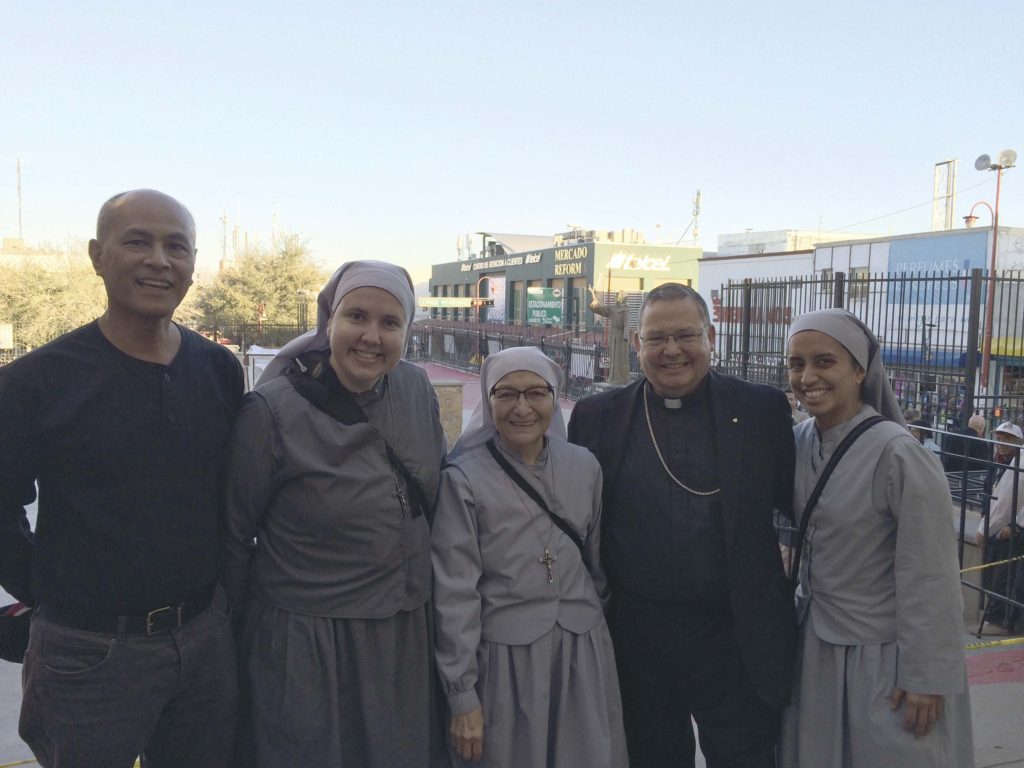
Pilgrims from Sacred Heart Parish in Phoenix said they woke up at 3:30 that morning, caught a bus at 4:55, and arrived outside “El Punto” in the Juárez Fairgrounds at 5:30, where they stood in line before being able to enter the fairgrounds at 12.
“I saw people full of joy, waiting for the pope to show up, willing to sacrifice and [be in the] cold in the morning,” said Sacred Heart parishioner and Juárez native Sergio Siller.
Referring to the drug-related violence that has plagued the city for the last decade claiming thousands of lives, Siller said the pope “came here for a reason. He knew the city was torn so he came to heal us.” Siller said the pope’s message brought not only hope to the city, but challenged the faithful to see the world “through the eyes of mercy.”
“There’s so much going on in the world, if I don’t see other people as my brothers and sisters, nothing’s going to change,” he said. “We have to find that love of God not only in us, but in everybody else.”
Miguel Palma, another pilgrim from Sacred Heart, agree. “We call him Messenger,” said Palma, referring to the Mexican bishops’ conference designation of Pope Francis as “Messenger of Mercy and Peace,” “and he couldn’t get to everybody. It’s up to us to listen to his message and go and spread it out so it can reach further.”
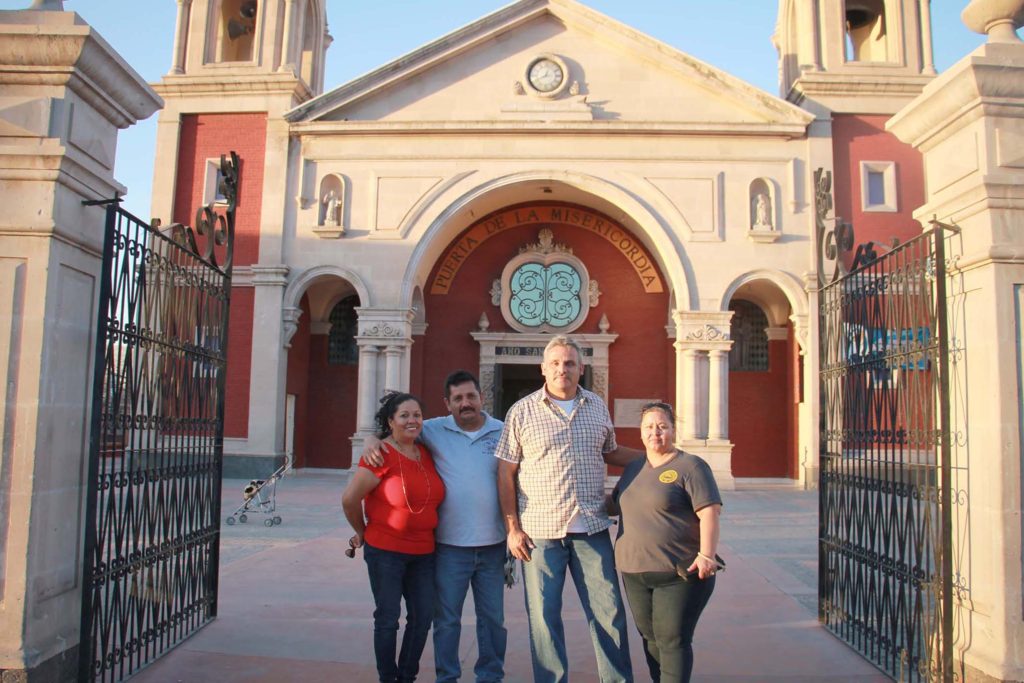
Luz Lobato, another Juárez native and office coordinator for the Diocese of Phoenix Kino Catechetical Institute, said the pope’s visit to the city was already a blessing before he even arrived, adding that the people, including non-Catholics, had been very hospitable and welcoming.
“You come to a city that’s been so hurt and it’s still in pain, and you have Pope Francis come in and give hope and remind us of our brothers and sisters who are immigrants,” Lobato reflected, adding that she was challenged to “look at the year of Mercy and look at ourselves as brothers and sisters, and be present to one another and [be] the face of God to one another.” Even in her administrative role, she hopes to “truly show the face of God.”
Patricia Hamrick, a parishioner at St. Timothy in Mesa, traveled to Juárez with her family and 10 other people from her organization, Voces Unidas por la Vida (Voices United for Life), a Spanish pro-life organization that emphasizes catechesis about life issues. Hamrick reflected on the significance of Pope Francis’ visit to Mexico being his first apostolic visit since the Jubilee Year of Mercy began.
“He came because he wanted to put the Year of Mercy into Our Lady of Guadalupe’s hands, with so much going on. He came to ask for her intercession,” she said.
Rosie Villegas-Smith, the founder and director of Voces Unidas and a parishioner at St. Francis Xavier, also traveled to Juárez with her family, and said she was touched by the Holy Father’s homily and encouraged in the work her group does.
“In Voces Unidas por la Vida, we advocate for the unborn and also for migrant families, for their dignity, so it was very touching to hear those words from Pope Francis, especially for the work we’ve been doing,” she said. Voces Unidas particularly advocates for the better treatment of pregnant women in prison, many of whom are migrants, Villegas-Smith said.
“It was very significant to hear Pope Francis’ homily and give us the strength to continue,” she said.
A family friend of one of the members of the group hosted the pilgrims and showed them the city. While there, the hosts expressed interest in starting their own pro-life organization in Juárez, said Villegas-Smith.
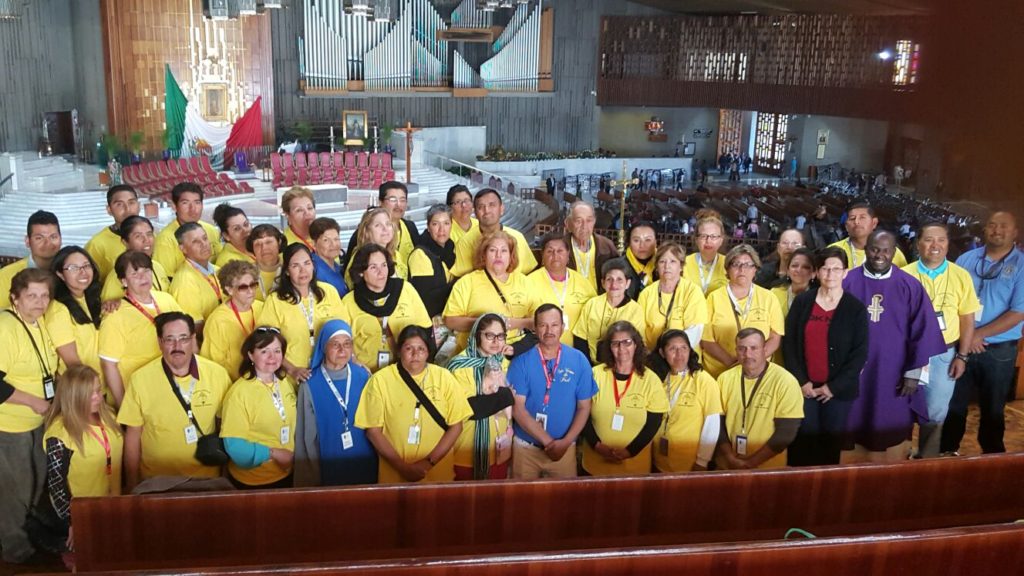
St. Anthony of Padua parishioner Paula Zazueta led a group of pilgrims from St. Anthony and Immaculate Heart of Mary to central Mexico to see Pope Francis during the first part of his trip to the country. The group saw the pope three times, and later during their pilgrimage visited the Basilica of Our Lady of Guadalupe.
“We stood where the pope stood,” she said. “I felt very joyful and happy because … he took the time to pray for the Mexican people.”
The pilgrims were also received warmly by the locals of Cholula, she said, where parishioners gave them private tours of some of the churches, and shared their histories. She was particularly inspired by their devotion, even though many of the parishes didn’t have a resident pastor.
“Everyone in the group is happy and feels very blessed to have this opportunity to be received and to have this special attention,” said Zazueta.



